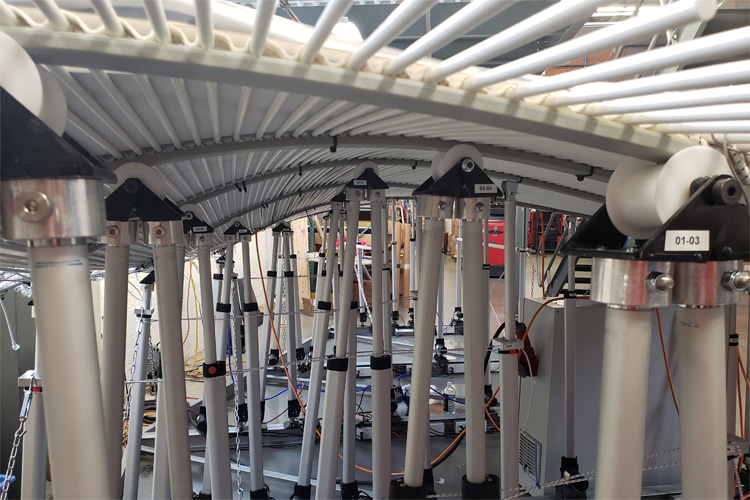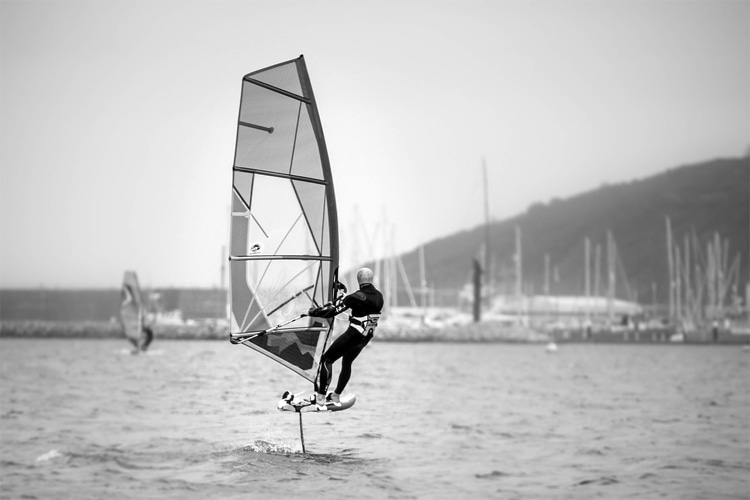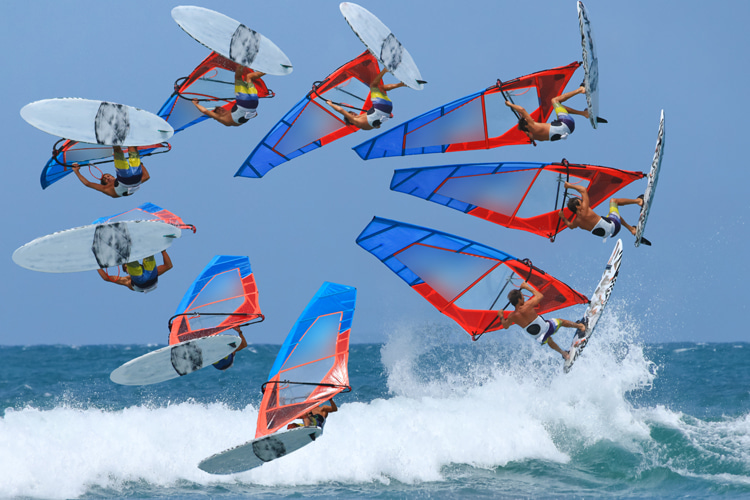Imagine a sail that is half the weight and lasts five times as long.
For years, a leading global sail manufacturer has dominated the sailing industry by pioneering high-tech composite sails.
Their popular 3D technology combines strategically laid fibers with an advanced flexible resin.
This process has birthed a sail that is radically lighter, radically stronger, more wear-resistant, and has the best performing sail shape on the market.
Gone are the days of heavy Dacron panels sewn together on a flat cement floor.
The company's revolutionary 3D sails are molded in three dimensions out of high-tech fibers strategically laid by a computer.
These sleek black sails have changed the game for super-yachts and around-the-world racers.
However, until now, these sails have largely been limited to the elite few who can afford to race boats 40 feet or longer.
And these sailors have certainly reaped the benefits as you'd be hard-pressed to find a single Melges 40 or a TP52 competing without a full set of these high-end sails.
However, wouldn't it be incredible if windsurfers and dinghy sailors could make this same leap?
I know that I personally seem to wear through a windsurfing sail every other season. Not to mention how heavy they can feel after a while.
So why isn't it available? Well, the problem is the equipment.
It is not financially feasible to use the equipment to make a small windsurf sail when, at nearly the same time, you can make a $40,000 TP-52 sail on that machine instead.
As a result, we low budget windsurfers, and dinghy sailors are stuck with the same low performing Dacron or sun-damaged Mylar sails that we've always had.
That is... until now.

What If We Could Bring This Technology to Windsurfing?
A few months ago, a brand's sail designer reached out to me to help find a way to scale the process down to make a line of 3D windsurf sails that would be affordable for the masses.
If we could pull it off, these sails would be half the weight of the lightest sail on the market, have a better shape, and last five times longer than any other sail you can buy.
This would be huge!
This task would not be easy, though. First, the 3D manufacturing process is not designed for sails of this size or with this much camber curvature.
This means we would have to completely redesign the way these sails are made.
Second, we would need one mold that can replicate the shape and curvature of any sail profile that a sail designer could conceive with every point on the 3D surface accurate to a half-centimeter.
We wanted the mold to be adjustable because most composite molds (carbon fiber or fiberglass) are very costly to make, are only capable of making one shape, and have to be completely rebuilt if any changes are made to the shape.
But, if we could make it adjustable, every sail shape and design iteration could be tested and built on the same machine.
Building the Molding Table
Armed with this goal, we were able to come up with a 10 feet by 25 feet adjustable mold with 58 uniquely controllable actuators.
This table is so easy to use that we were able to test or mold dozens of different sail shapes within the first month.
These sails are now being shipped around the world to test and help optimize the first launch of the brand's 3D windsurf line.
We tested five different sail configurations. The full process took about ten minutes.

Heating and Curing
In addition to building a mold capable of taking any shape we want, we also needed a way to cure each sail at 100°C, in its desired position, and under vacuum pressure.
To do this, we added a layer of heat blankets and two layers of silicone sheets.
The heat blanket and the first layer of silicon would remain underneath the sailcloth, and the second silicon layer would go on top.
These silicon layers zip together, and a vacuum pump then sucks the air out as the blankets heat up.
It takes only seven minutes before the sail is cured and ready to be pulled off.
Altogether, two people can easily finish a sail in under 30 minutes.
As a result, the sail manufacturer will be able to make over 40 sails per day on this machine.
Ease of Use
To ensure the machine could be operated without an engineering degree, we put a lot of effort into an easy to use graphical user interface (GUI).
The entire machine can be controlled by a simple Linux-based computer stationed next to the machine.
With a mouse and keyboard, an operator can easily load files, change actuator positions, and control any part of the machine from this simple control window.
This machine has reinvented the way 3D sails are made.
It has allowed windsurfing sails to be affordably mass-produced and has opened the door to affordably 3D sails for dinghies from 420s to moths, to lasers, and even to even kites.
Words by Liam Shanahan | Entrepreneur and Inventor at ElevateStoke.com
